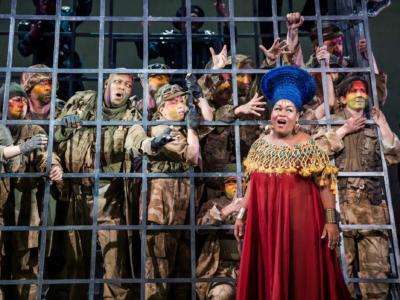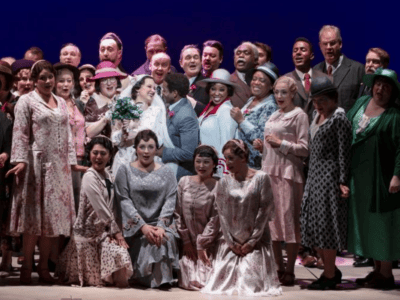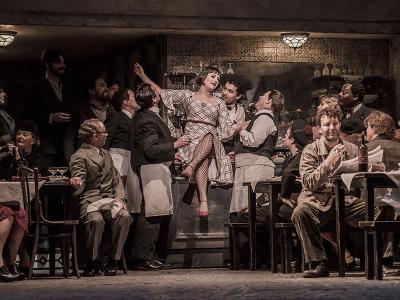An Introduction to Rigoletto
If you’re new to the world of opera, there’s no better place to start than with Giuseppe Verdi’s masterpiece: Rigoletto.
Set against the backdrop of Renaissance Italy, it’s a dramatic tale of love, betrayal and revenge. Whether you’re drawn to its compelling narrative, powerful music or historical setting, Rigoletto has captivated audiences for generations – and continues to do so.
Here’s everything you need to know about the ENO’s iconic production of Rigoletto.
It's an opera by Verdi
This opera by Italian composer Giuseppe Verdi has been a favourite among audiences ever since its opening night in Venice, Italy on 11 March 1851.
It premiered to a full house who enjoyed it so much that they were heard singing it in the streets the next morning. It is based on the 1832 play Le roi s’amuse by French writer Victor Hugo, who is better known for his novels Les Misérables and Notre-Dame de Paris.
Video
The story revolves around Rigoletto, a jester for the Duke of Mantua. The Duke is a corrupt ruler known for his womanising ways. Rigoletto’s life becomes complicated when his latest wisecrack starts a vendetta that is far from amusing, leaving him cursed. The Duke falls in love with a mystery woman, who turns out to be Rigoletto’s innocent daughter, Gilda.
Rigoletto discovers that Gilda has been abducted and seduced by the Duke. However, his plan for vengeance goes wrong, and Rigoletto’s curse means that he won’t be having the last laugh…
Our 'Mafia' production is set in New York's Little Italy
Created in 1982 by director Jonathan Miller, this ENO production transfers the opera from its original setting of 16th century Mantua to the Mafia world of Little Italy in New York City in the 1950s.
It was one of the first productions to drastically change the original setting of an opera, which is partly why it has such an iconic reputation.
Video
Director Jonathan Miller himself wrote in the Rigoletto programme when it was first performed,
“19th-century composers were comparatively haphazard in their choice of historical period, and putting the action in the distant past was one way of creating an exotic atmosphere.
“It’s easy to map an Italian Renaissance court onto a 20th-century criminal gang. Plus ça change, etc.”
We think the new setting lends itself well to the tragic story of jealousy, vengeance and sacrifice – much like you would find in any of Francis Ford Coppola’s Godfather movies.
You've probably heard it before
The most famous part of Rigoletto is the aria ‘Women abandon us’ – or as it’s known in Italian, ‘La donna è mobile’: One of the most familiar pieces of music in all of opera, the aria is sung by the Duke of Mantua and is all about the “fickleness of women” (his words, not ours!).
You will recognise this from all sorts of popular culture references – from the Pizza Ristorante advert and the soundtrack of the computer game Grand Theft Auto III and many other films and TV shows including Alvin and the Chipmunks and The Simpsons.
Video
A Jonathan Miller production
Director Jonathan Miller had a more than 30-year relationship with ENO, where his productions have included Rigoletto, The Barber of Seville, The Mikado, Carmen, Der Rosenkavalier, La traviata, La bohème and The Elixir of Love.
Apart from his international engagements as an opera director, he has worked for theatres in London, Europe and the USA.
Watch a short video interview with Miller speaking about his experiences as a director.
Video



